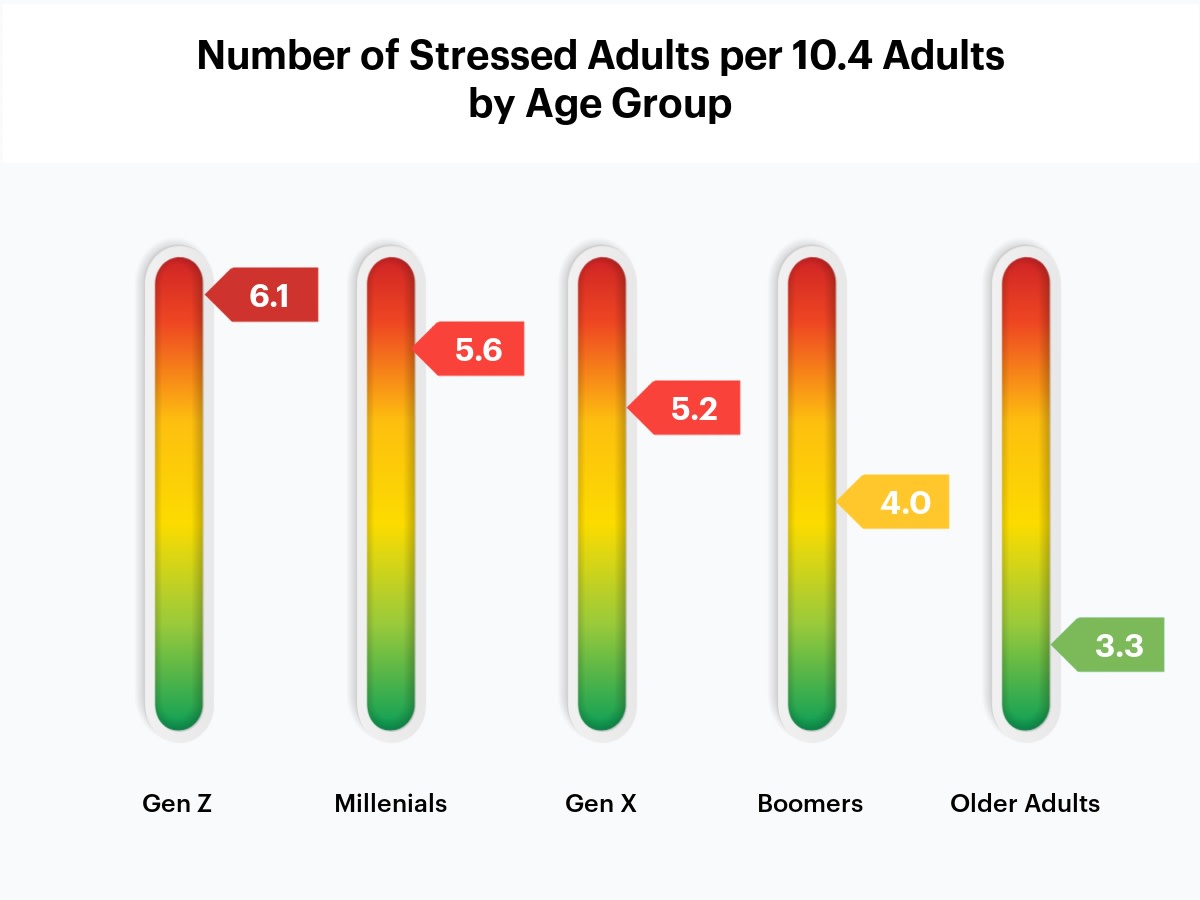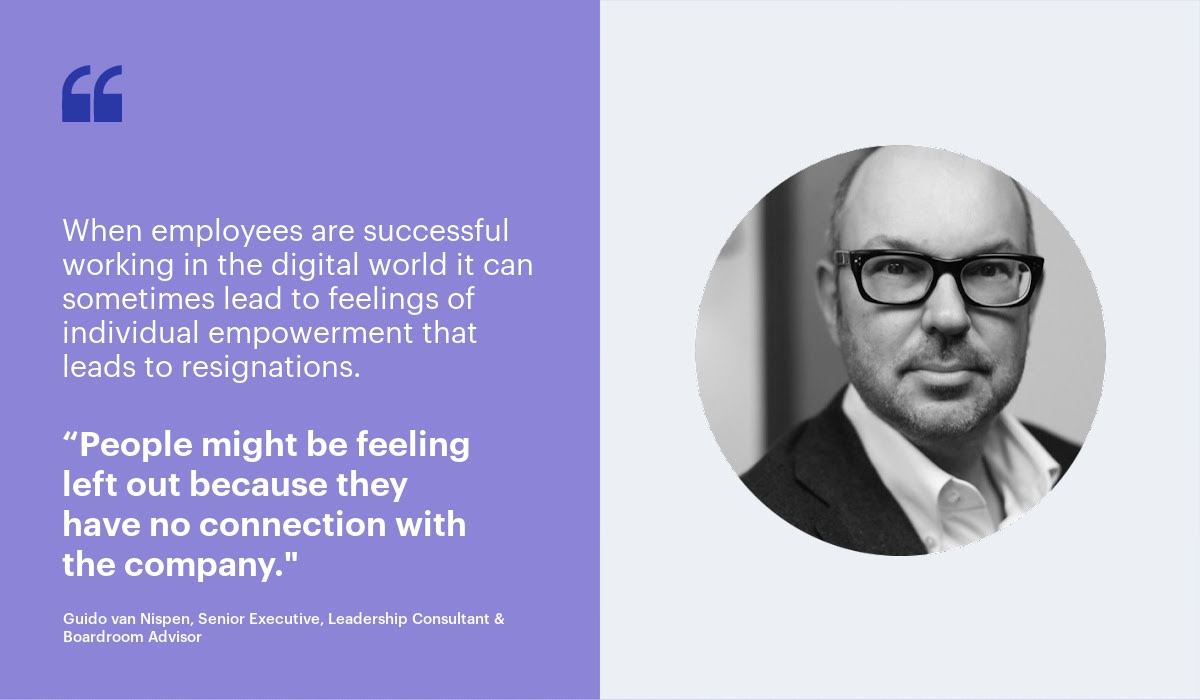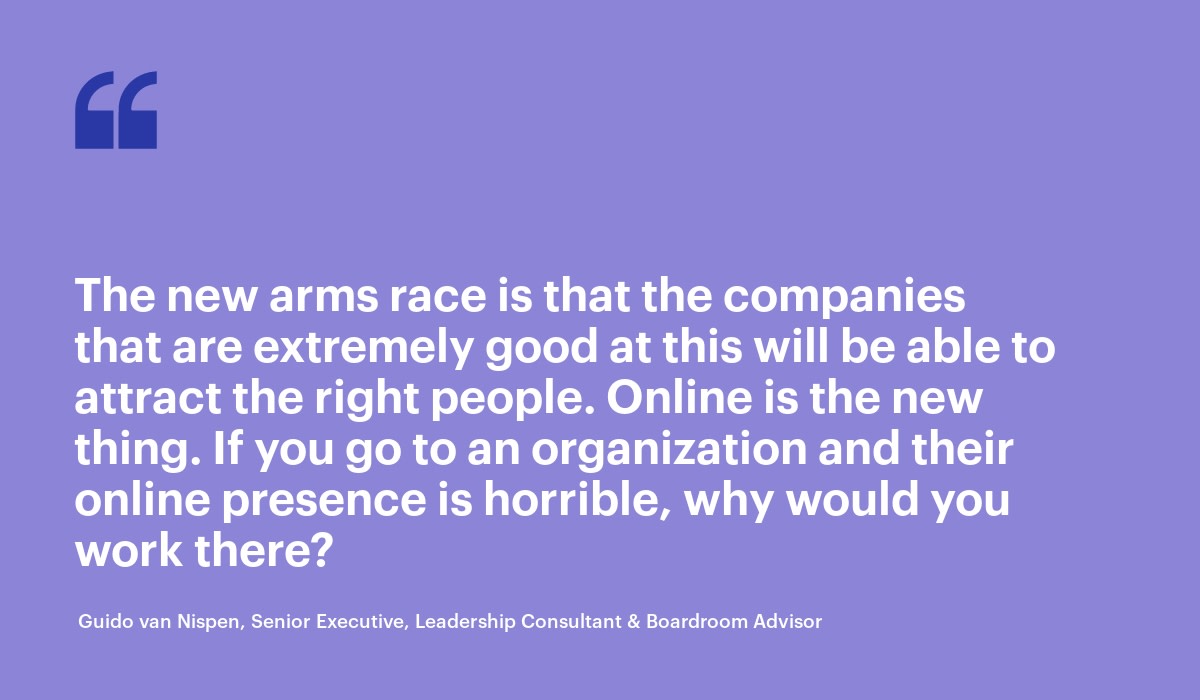Managing Your Employees’ Pandemic Stress Level
The last few years have casued society to experience high levels of stress. So how can employers help their employees' mental health?

According to the American Psychological Association (APA) “We are facing a national mental health crisis that could yield serious health and social consequences for years to come.” In a 2020 survey, the APA reveals that American workers are facing an unprecedented and seriously concerning amount of stress as a result of the COVID-19 pandemic.
To start with, the death toll from the COVID-19 pandemic has reached around 924,000 in the United States, according to The NY Times. Some publications such as The Economist and Nature have produced economic models that show that millions more have died than official counts. Even sticking with the NY Times’s count, this is more Americans than died in World War I (116,516), the Vietnam War (58,2092), and the Korean War (36,5163) – combined. Two years into a global pandemic and most Americans have either been infected with COVID-19 or know someone who has. Anxiety over COVID-19 is the leading stressor faced by American workers, but it isn’t the only one. The last few years have introduced new worries over the economy, climate disasters, social upheaval, political strife, and the very fate of our country no matter where you fall on the political spectrum.
And the nature of work has changed dramatically—some people would say for the better, and many would say for the worse. Lockdowns mean that more people are having to either work from home (WFH) or find themselves trying to navigate hybrid work— going into the office a few times a week, and trying to stay synched as a team across various modes of communication.
50% of the people surveyed in the Mind Share Partners’ 2021 Mental Health at Work report said they left their job in 2021 due to a mental health issue. That’s a concern that HR leaders need to address. The cost of rehiring, onboarding, and retraining could be astronomical!
Zoom fatigue, burnout, and moral injury
“Moving everything to the cyberspace of Zoom or to Teams was a big, stressful shock to people who hadn’t worked that way before. Even if you had, it was intimidating to spend so much time ‘presenting’ yourself and watching all those little Brady Bunch boxes for body language,” says Steve Barth, a longtime consultant on organization effectiveness who has taught organizational design since 2015 at USC and CalState Long Beach.
Just showing up is a major source of stress and one that’s led to what is commonly referred to now as zoom fatigue. Jodi Gorenstein, VP of Human Resources at Shiseido in NYC, a beauty company, is typical of many HR pros. Not only did she face these stressors as an individual but she also had to dictate policy for her company’s employees. Like so many, she had to learn how to handle work from home while her husband was doing the same, and her two children were participating in remote learning.
“We need to think about how we show up on Zoom. Can it be a call or does it have to be on video? There are days when I don’t get outside. Did I love taking the subway four days a week? No, but there is something about being out there in the real world,” she explains.
Simple things, like a good noise-canceling headset or a comfortable chair, can make a huge difference but we are now two years into the pandemic and some companies have yet to properly equip their remote workforce. “Today I have had a lot of Zoom meetings and there are people that still don’t have good quality audio and video. That’s tiresome. And you are always on camera. It creates a lot of physical distress,” says Guido van Nispen, a leadership consultant and boardroom advisor with Workforce Engagement, a consultancy in Amsterdam.
According to the CDC and other sources, both substance abuse and suicide have risen dramatically during the pandemic. Casual use of drugs and alcohol might be considered a coping mechanism, but it’s an alarming problem and one that is difficult for people managers to monitor since much of it may be happening at home where it goes unseen.
The kinds of stress felt by American workers are just beginning to be understood and categorized. This is the first step to understanding how to deal with them. “Psychology is starting to delineate three overlapping issues that already existed in American work life, but which have been greatly aggravated by COVID and everything else that has gone on over the past two years,” says Barth. “These are burnout, PTSD, and also something called ‘moral injury.’ Burnout damages your sense of self-efficacy. PTSD affects your ability to feel safe. Moral injury is the damage to your trust and values from experiences of betrayal or shame.”

Navigating the new normal
Gen Z has less of a problem showing up on camera (the popularity of TikTok proves that younger workers, often digital natives, understand and are enamored of technology, and are good at building a personal brand), but the APA report indicates that they are suffering from a lack of faith in the future. Gen Z adults (ages 18-23) are experiencing adulthood when the future looks uncertain, whether from climate change, political unrest, or the still unknown long-term effects of COVID-19. Gen Z adults report the highest stress level during the prior month, on average, at 6.1 out of 10.4 This is significantly higher than all other generations: 5.6 for millennials (ages 24-41), 5.2 for Gen X (ages 42-55), 4.0 for boomers (56-74) and 3.3 for older adults (75+).

For companies having to deal with this new normal it is a seismic shock to the system the likes of which haven’t been felt since the industrial age. How do you manage employees that you never even see or talk to in person? How do you ensure that they have adopted your company’s values? How do you measure performance in a digital world?
Denise Brouder, a Workplace Futurist with Sway Workplace, a consultancy, sees this as less of a problem for Human Resource professionals and more of an opportunity. ”We are evolving a new version of structure, order, and routine,” she says, adding that we moved from a time 100 years ago when workers were just cogs in a process that was heavily ordered and controlled from the top down to a time when the emergence of the knowledge worker gave individuals more agency. Not only have we been here before but hybrid work is just work’s natural evolution. What’s needed is to come up with new rules that fit the current times.
Gorenstein, who is helping to drive part of her company’s digital transformation team and has served on the Shiseido Americas Health and Safety Task Force, formed to address the myriad of challenges related to Covid, is at the forefront of this change. With a focus on keeping employees safe, she has rolled out new protocols for navigating the NYC vaccine mandate and instituted a mandatory return to work. Some of these things are common sense and could have been applied prior to the pandemic. At her company Shiseido there are typically no large or recurring meetings on Friday unless they are critical, no meetings before nine A.M. or after five P.M. and lunch meetings are to be avoided. Meetings must have agendas and clear goals. Because emails are a big time suck, she has also implemented simple rules to avoid that such as getting people to stop replying all or getting them to remember to change the subject line before replying. One of the most effective changes at Shiseido was to separate roles into hybrid and fully remote with different rules for each group. This is still a work in progress as they haven’t yet returned the corporate employees back to their office on a mandatory basis.

Van Nispen says that it is necessary for companies to engage more with their (mostly) remote employees in order to best understand their individual needs and motivations. When employees are successful working in the digital world it can sometimes lead to feelings of individual empowerment that leads to resignations. “People might be feeling left out because they have no connection with the company,” he says, offering one explanation on why some workers leave one job to seek out more appreciation at another. “People want to be recognized and listened to. There’s an opportunity to create a much better contact with your workforce.”
Handled properly, this could be an opportunity for employee retention. In fact, those surveyed by MindShare who felt supported by their employer during the pandemic were 2.4x as likely to be satisfied with their job and 2x as likely to expect to stay at their company for 2+ yrs.
Reduce employee stress by meeting them where they are
The experts agree that it is all about establishing trust with your employees. “Authentic trust is the oxygen in the air of flexibility,” says Brodeur. It may be harder to monitor and measure employees than your company might like, but giving up some control may be necessary in order to maintain a productive dialogue.
Van Nispen suggests following the example of digital first companies such as Apple, Google, and Meta who were already living in the future and thus were better prepared for the digital apocalypse. ”They had beautiful HQs but they could still make the switch to online overnight. They already had remote employees. The new arms race is that the companies that are extremely good at this will be able to attract the right people. Online is the new thing. If you go to an organization and their online presence is horrible, why would you work there?” Not only have these companies figured out how to best equip their hybrid workforce (spending on internet connections, computer hardware, and videoconferencing setups) but they have also introduced generous bonus packages for employee retention.

When it comes to adding to our collective stress, the pandemic’s timing was notoriously poor. The last couple of years have been a rough ride for most Americans. “I think what’s super important to understanding what’s happening are the ways in which so many other sources of stress and anxiety—sources that are completely outside the workplace—are leaking into our individual and collective professional personas,” explains Barth. “We’re so polarized right now, but I think it’s fair to say there is equal stress on either side of any of these issues. And of course that polarization is a huge source of stress and anxiety itself, that is literally tearing communities and families apart.”
Getting people to return to the office after they’ve had a taste of working from home might be difficult for some companies. Despite Shiseido’s forward-thinking policies, they recently implemented a mandatory return to the office, which begs the question: How do you compete with companies that are offering hybrid or fully-remote positions? “When we were planning our mandatory return to office, I kept challenging our leadership,” says Gorenstein. “What are we going to say when [our employees] say ‘I’ve been working effectively from home for two years?’ Instead of mandating that they come in two or three days a week, I said let’s do 10 days minimum a month, going into the office for those meetings that lend themselves more to being in person.”
With company support, both in terms of properly outfitting their employees with fast internet connections, new computers, office furniture, and videoconferencing equipment while also doing a better job of understanding employee motivations, businesses can help to minimize employee stress. Retraining and regular check-ins will also help employees feel more like they are a part of the company—even if they never again set foot in the home office.



